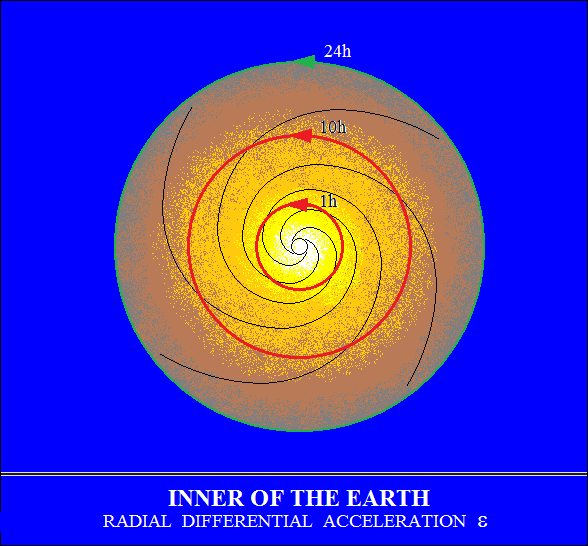There
are two kinds of "gravitational" accelerations!
EM force simultaneously produces two types of "gravitational"
accelerations in two orthogonal directions:
Centripetal acceleration "g" and orthogonally the angular acceleration
"e".
These two accelerations have in common the magnetic field and generate
their interaction partner - electric current (electromagnet), g for e and e for g.
It follows that these forces are directly proportional.
Increasing the angular acceleration, increases the centripetal acceleration
(the weight).
These simultaneous interactions have the effects observed in cosmic images
published by NASA, which show the harmony between differential rotation
and Coriolis force.
And the effects are also orthogonal - axial and radial.
The main effect is differential angular acceleration in both directions.
The images of the planet Jupiter show the intermediate period of the transition
from the star stage (homogeneous structure, plasma) to the planetary state
(with viscosity).
The angular acceleration curve is multiple fractioned by non-homogeneous
structure of the substance and the electrical conductivity, symmetrically
with the equator. The polar caps and parallel discs are thus formed with
different rotational speeds. Logically the rotation motion on the radial
direction is also differential, the concentric layers spin at different
speeds, resulting in the discoidal form of centripetal interaction and
spiral motion (the arms of the galaxies).
Obviously, this also leads to increased acceleration towards the center.



